Iconada.tv 愛墾 網
文化有根 創意是伴 Bridging Creativity
Comment
-
Comment by Host Studio on February 15, 2024 at 10:22am
-
(Pg 3) As Stephen Denning, former program director at the World Bank, said in the introduction to his book The Springboard: How Storytelling Ignites Action in Knowledge-Era Organizations, ‘‘Time after time, when faced with the task of persuading a group of managers or front-line staff in a large organization to get enthusiastic about a major change, I found that storytelling was the only thing that worked[2].’’
A case: telling the story of a new business model ‘‘It was a real trying period,’’ says Steve Altmiller, President and CEO of San Juan Regional Medical Center, reflecting back on his early years at the 175-bed, sole-community provider in Farmington, New Mexico.‘‘There I was, a new CEOatahistorically strong community hospital and suddenly everything was out of sync. We were taking lots of financial hits; our earnings were down; our hospital-sponsored health plan was going bankrupt; unions were trying to organize our nurses; and, we were making many operational and management changes that introduced lots of anxiety. It seemed like everything we talked about was negative, one problem after another. My board said we had to find a way to focus on something positive.’’
Altmiller decided to engage a top group of his leaders, directors, board members, and physicians in developing a comprehensive experience strategy that would change the company’s business model. Shortly into this two-year project it began calling itself the Galileo Group, for its goal was to discover a new and more personally meaningful center of the healthcare universe. In the midst of their work the members made a radical decision: they would focus first not on the patient experience but rather on the employee experience. ‘‘We can’t consistently provide the most personal patient experience until we can consistently provide the most personal, healing, professional experience. If you expect to be successful in individualizing the patient experience you’d better get good at individualizing to the employee,’’
Altmiller told us. ‘‘Our entire patient experience redesign will start with an exclusive focus on the employee experience. We’regoingtotrytopersonalizeeverything from recruitment to retirement because we think it will do more than anything else to help our employees understand what we want for patients. And in these times of staff shortages and heavycompetition for the best people, it would bea good strategy even if we weren’t planning on doing it for patients. As it is, we’ve come to believe that individualizing the experience will ensure our future success. You’ve got to be able to do it not just whent imes are good but when times are hard. We’re not just following a trend– we’re putting it in everything we do.’’
So a new mission, vision, and philosophy were developed, a new personalized benefit program put in place, and a completely new healing environment designed into the facility expansion project. Many other initiatives were being readied while the rollout of the first phase of changes was begun. And then something quite unexpected happened. The hard work, careful planning, and the innovative design– all of it resulted in confusion, not cohesion. ‘‘I realized pretty quickly,’’ Altmiller relates, ‘‘that while we had done a good job of
defining ‘the what,’ we were doing a bad job of communicating ‘the why.’ If we were ever going to connect the dots, it wasn’t going to be with another PowerPoint presentation. Instead we needed a ‘what’s the point’ experience.’’
-
Comment by Host Studio on February 14, 2024 at 1:02pm
-
The story of ‘‘Raiders of the Lost Art’’ And so work began on a story– one designed todescribe the future of San Juan Regional. It became known as ‘‘Raiders of the Lost Art’’ (see the story map, Exhibit 1). As the name implies, through this adventure story wewere looking for something that had been lost, namely the art of personalized healthcare. The story took place in three distinct lands: the land of Medicus (Medical Professionals), the land of Communia (Regional Community), and the land of Patiem (Patients). In each land, operational statistics, industry trends, competitive issues, and organizational initiatives relating specifically to the subject of that area were provided.
Here’s a quick sampling of the lessons presented on a journey through each land: B In the land of Medicus, employees learned how the Baby Boomer generation affects not only the patient population they treat, but also the peers with which they work on a daily basis. B In the land of Communia, employees took an in-depth look at the hospital’s community satisfaction results and discussed how they could change processes and/or work styles to improve these results in the future. B Lastly, in the land of Patiem, employees learned of the exciting new plans built into the Facility Expansion Project, which would provide a unique healing environment for employees as well as all patients and their families. These encounters were enlivened by an environment filled with props, presented by an Indiana Jones-like facilitator (with assistance from manager guides), and through map icons (landslides, volcanoes, rope bridges, mirages, a treasure chest, hidden caves, a bottomless pit, deserts, oceans, secret passageways, and lush gardens– to name just a few). But the Raiders of the Lost Art story was not only told–it was also asked.
At each map icon, when some new challenge or initiative was presented, a series of small group discussions were held that involved every employee in the session in a deeper examination. Questionslike, ‘‘Does this surprise you?’’, ‘‘How do you think this will affect us?’’, ‘‘Are we doing enough?’’, and‘‘What else would you do?’’ engagedemployeesinstrategy workas neverbefore.And as word of the exciting work spread throughout the hospital, more and more employees wanted to be involved.
Intheend, nearly 70 percent of SanJuan Regional’s1,300 employees attended the voluntary day-long sessions. Almost 900 distinct process, program, and facility suggestions were captured and then analyzed, with approximately half of them implemented. All of a sudden, the connection between management and employee changed. Skepticism, fear, and apathy were replaced by understanding, excitement, and a sense of partnership. According to both soft and hard measures, morale improved, turnover plummeted, and employee satisfaction scores climbed dramatically. New initiatives were understood and embraced; for example, over 80 percent of the employees have signed up for the customized benefits program that is more personally relevant and less expensive to the provider. Further, San Juan Regional recently opened a Child Discovery Center with almost 70 percent of its capacity filled by the children of employees (see Box 1).
-
Comment by Host Studio on February 13, 2024 at 2:29pm
-
‘‘ Welearned awholenewwayformanagementandemployeesto work together to make dramatic new things happen. So we have committed to this type of storytelling and feedback to be done every 18 months.’’
The story helps win a local election During the time it was practicing its storytelling initiative, San Juan Regional was developing plans for a major facility expansion and renovation to create a state-of-the-art healing environment and in order to help fulfill its new mission, vision, and philosophy. Indeed, many of the employee suggestions that came out of the Raider’s story were focused on this new facility. Unfortunately, the hospital could raise only about half of the money required to complete the project.
As an alternative, San Juan Regional could go to its community for financial support through bond issues or tax initiatives. But the last three times it had done so– all for much less money than was needed this time– it had been turned down. The Raiders of the Lost Art story sessions were completed about four months before the gross receipts tax election. Subsequently, largely without any help from management, employees began to talk to each other, to their families, and to their friends and neighbors. Their tone was an enthusiastic one; they talked about what the project was and, more importantly, what the expansion project meant to patients, families, healthcare professionals, and local businesses. In other words, they talked about everything they had learned from– and contributed to– the story. When Election Day finally arrived, the mood was a mix of anticipation and anxiety. What would happen if the voters said no again?
How would the hospital ever fulfill its aspirations? And with new hospitals being built in surrounding communities, could San Juan Regional ever compete successfully should a no vote occur? As the votes were counted, it was obvious that there had been a major change in public sentiment. San Juan Regional’s tax initiative had received 84 percent of the vote! More than four out of every f ive voters supported this tax initiative, which had a higher price tag than the initiatives they had voted down in the past. Construction has now begun on a new facility that will let San Juan Regional provide a healthcare experience that lives up to its new mission, vision, and philosophy, and will enable it to recapture the Lost Art of Personalized Healthcare.
-
Comment by Host Studio on February 12, 2024 at 2:57pm
-
Riddle of the Sphinx
Since the day of the last Raiders session things have changed dramatically, and will continue to do so. Therefore, the need for another story, and down theroadanotherone after that, and one after that. Steve Altmiller said, ‘‘When we decided to do theRaiders story,I lookedat it as R&D. At worst, we would learn something, and what we had done up to that point wasn’t working anyway. At best, we would build a whole new capacity that would enable us to do newthings better, faster, and, ultimately, less expensively. So it seemed it was worth the risk. When Raiders was such a big success, I wanted to use that success as a building block. I didn’t want anyone to see it as a one-time thing done primarily to pass the gross receipts tax. That would have missed the whole point of what we learned. We learned a whole new wayfor management and employees to work together to make dramatic new things happen. Sowehavecommittedto this type of storytelling and feedback to be done every 18 months. It’s just the way we’re going to do things from now on.’’
And so a second story was prepared and told, this one entitled ‘‘The Riddle of the Sphinx’’(see the story map, Exhibit 2). Through solving various riddles and an anagram posed by an Ancient Egyptian Sphinx, San Juan Regional employees solved the many confusions that plague an industry as complicated as healthcare. For example, the employees’ first riddle revolved around various communications confusions– such as an in-depth look at the most recent employee satisfaction survey (wherein communications between employees and their managers ranked 4 percent below the national norm). The next riddle comprised all of the confusions related to staffing. Here, employees learned about the ne west work/life balance programs recently put into place by the hospital. Riddle three considered an assortment of processconfusions. Duringthisstage, employeesbrainstormed ideastomoreeffectivelytreat patients despite ever-increasing industry regulations.
The next riddle addressed numerous patient-expectation confusions. In one example, employees were asked for ideas about ways to decrease the number of patients who seek treatment elsewhere because they were unaware that San Juan Regional offers those specific treatments. The final riddle asked employees to uncover technology confusions, through conceiving new ways to more effectively train staff members on increasingly complicated technologies throughout the system. Best of all, as these riddles and confusions were addressed and discussed, employee ideas were meticulously recorded so they could be used in future initiatives. From an environment and employee engagement point of view, Riddle of the Sphinx was an even bigger production than Raiders. ‘‘We wanted to capture the same element of surprise and amazement we had in Raiders, and we knew that would require an even more elaborate experience, since Raiders had raised everybody’s expectations so high,’’ said Altmiller.
And so it was. The Sphinx story took over a recently closed elementary school and transformed it into Ancient Egypt. The Raiders story ended under crossed palm trees (‘‘X’’ marked the spot), so that’s where the Sphinx story began. A Disney-esque pre-show and post-show video was produced to engage employees in the storyline before the work began and to summarize the story’s key moral once it was over
-
Comment by Host Studio on February 11, 2024 at 4:16pm
-
(Con't fr above) Addressing the art of what’s possible, Steve Altmiller summarizes his experience with storytelling this way, ‘‘Before we started our storytelling work, the reaction to most of the things in our experience strategy plan was ‘You can’t do that in Farmington.’After Raiders and Sphinx, we are doing all of the things in the plan. That’s a big difference.’’
So the key message executives should take away from this story on stories is this: Don’t just spend countless hours, valuable brain cells, and barrels full of money doing the research, analysis, goal-setting, and implementation planning necessary to come up with an industry-altering strategy. If you want your change message to actually take hold– if you want it to transform how things are done in your world– then weave your message about the new strategy into a compelling and memorable story. When more leaders immerse their employees in compelling and inspirational strategy stories, more companies will thrive happily ever after.(How storytelling can drive strategic change, Article in Strategy and Leadership · January 2006 [DOI: 10.1108/10878570610637876], Four Author including: Notes: 1. B. Joseph Pine II and James H. Gilmore (1999), The Experience Economy: Work Is Theatre & Every Business a Stage, Harvard Business School Press, Boston, MA, chapter 10 in particular. 2. Stephen Denning (2000), The Springboard: How Storytelling Ignites Action in Knowledge-Era Organizations, Butterworth-Heinemann, Woburn, MA, p. xiii. Corresponding author: Gary Adamson is the corresponding author and can be contacted at: gary@starizon.org)
-
Comment by Host Studio on February 2, 2024 at 11:31pm
-
(Photo Source[below]: Revitalization of Singapore's Bugis Village and Bugis Street)
地方文化營銷 2.1:特色小鎮 传播地方独特性形象定位树立能传播地方优势和独特性的形象,
使其在地方营销竞争中脱颖而出。
INDRIYA 文化特區LITERATURE: The Great Stry Continues
P 文化創意産業園區
P Cultural hubs: How to create a multidimensional experience
P Hubs can champion smaller venues
-
Comment by Host Studio on January 31, 2024 at 10:58am
-
Weaving Heritage and Culture Through Time – Royal Pahang Silk Weaving by Rey Belen
Traveling to another country makes you learn a lot of things about places, culture and people, so goes with its fashion. And in my recent trip to Pahang, Malaysia, I was able to see one of Malaysia’s fashion tradition at the Royal Pahang Silk Weaving Centre (Tenun Pahang Diraja).
Silk weaving is historically known to be from China. However, many countries, mostly Asian, have learned the skills. Malaysia is one of those countries who acquired the knowledge, so are the neighboring countries, including the Philippines.
The Royal Pahang Silk Weaving Centre in Sungai Soi, Kuantan is a gallery of handwoven produce sporting Malaysia’s traditional silk creations, contemporary designs and even the royal family’s wardrobes.
In a brief tour that we had in the center, I understood how the Malaysian government is making big leap in preserving their heritage, particularly the silk weaving industry.
These handwoven silk products may be for taste of many, but since they’re handmade, it comes with a price, not for everyone’s pocket.
Despite the cost however, Pahang silk is fast becoming a popular choice for wedding attire and other formal suits.
Aside from the handwoven silk products, the Royal Pahang Silk Weaving Centre also lets visitors to see the whole process of weaving silks. From the threading of silks, dying up to the actual hand weaving – the works.
Plus, you can get to try it as well, the actual hand weaving. Don’t worry to mess-up, since staff of Tenun Pahang will be there to guide you.
Royal Pahang Silk Weaving Centre also showcases other uses of the handwoven silks, like on shoes, bags, curtains, furnitures, cases, wallets, throw pillows and other things.
The Royal Pahang Silk Weaving Centre sells online and on-site. So if you want to check all their products or experience how silk hand weaving is done in Pahang, then, you head out to their site. It is just two hours away from Kuala Lumpur.
Realistic Attraction Sdn. Bhd.
Kompleks Pengembangan Tenun Pahang Diraja
Sultan Haji Ahmad Shah
Jalan Kempadang Perdana 1,
25150 Kuantan, Pahang, Malaysia
Telephone: 0199505599
Fax: 095341736
http://www.tenunpahang.com.my/From Philippines
Pahang is accessible via Kuala Lumpur. There are flights going to Kuala Lumpur from the Philippines. AirAsia currently has two (2) flights daily to Kuala Lumpur from Manila.
But starting Ocober 29, AirAsia will have Manila-Kuala Lumpur flights 3x daily while 4x weekly Cebu -Kuala Lumpur flights 4x starting Oct 30, 2016.
airasia-booking
So any trips going to Kuala Lumpur, Pahang or any other Malaysian destination from the Philippines can be connected via Manila-Kuala Lumpur or Cebu-Kuala Lumpur trips.
And to know more about Pahang or any other destinations in Malaysia, you can always check out the Tourism Malaysia official website.
Rey Belen is an adventurer, blogger and digital marketing professional. He shares his experiences on travel, tech and lifestyle.
-
Comment by Host Studio on January 31, 2024 at 10:58am
-
Royal Pahang Silk Weaving CentreIn existence since 200 years ago, Royal Pahang Silk is a proud testimony to the colourful past of the Pahang royal family. Quality silk has been produced for hundreds of years by a selected household at Pulau keladi, where the traditional and intricate weaving method has been passed down for generations. In recent years, the task of promoting Royal Pahang Silk was passed on to the Silk Weaving Centre. A wide range of silk products is now available at the centre.
The centre produces quality fabrics which originates from Pekan, the Royal Town of Pahang. The design of the fabrics are characterised by a checkered pattern that is arranged in such a way that its colour sequence can be changed intermittently from the warp. Once an exclusive item of the Pahang Royal Palace, Tenun Pahang Diraja today has gone through various changes to suit local and foreign tastes the fabric is suitable for formal dinners, wedding ceremonies and other important events. [Open : Monday - Friday; Contact : 609 - 422 1612]
(Source: https://www.pahangtourism.org.my)
-
Comment by Host Studio on January 30, 2024 at 10:10am
-
馬來西亞針織廠商會
簡介立足於享有「馬來西亞紡織城」之稱的峇株巴轄,馬來西亞針織廠商會是我國主要的紡織及服裝廠商會。
本會會員遍布全國各州,涵蓋紡織服裝業的所有領域,包括紡紗、織布、染整、後處理、成衣、刺繡、絲印以及相關的供應商。此外,海外的公司也可以成為本會的附屬會員。
本會在馬來西亞紡織與服裝業的發展裡程中扮演著舉足輕重的角色。我們與政府部門、相關機構、商業團體保持緊密聯系,一起處理問題、提供政策咨詢以及協助推廣計劃。
在歷任會長、理事及會員的齊心協力牽引下,本會在國內外都建立了深厚的的網絡與人脈,以期帶來貿易商機及提升行業的競爭力。此外,本會也建立了我國最具豐富紡織資訊的網站,也是獨家出版每周快訊和會訊的紡織商會,讓會員在第一時間掌握全球紡織動態。
馬來西亞針織廠商會成立於1975年,四十九年以來,雖然歷經許多的艱難與挑戰,我們還是乘風破浪,步伐愈加穩健,建立了穩固的根基。面向未來,我們促請同業團結一致,你們強大的支持力,是我們前進的動力。讓我們心手相連,繼續勇往前行,創造更燦爛的明天。
使命
MKMA 有四個主要使命
提供工業全球競爭力
提升紡織品的品質
開發及開創市場機會於會員
解決工業所面臨的問題
活動與服務通過電郵及通告傳送新聞,消息及資訊。
出版會訊讓會員掌握本地及國際的各種資訊。
協助會員參與國外紡織展來擴展生意網絡及提升市場價值。
主辦商業考察團到國外參觀貿易展,紡織廠和其它貿易商會。
開辦培訓課程,講座會及工作營來提升會員在管理及生產技術的能力。
與提供紡織教育的高中,工藝學院及大學繁密合作以推廣紡織教育,並栽培紡織專才。
登載電子會員目錄成為重要資訊來源。
與政府機構舉行關於紡織貿易的會議及對話以向政府進言,解決會員一般所面對的問題。(Source: https://mkma.org/cn)
延續閱讀
文化特區專綫
-
Comment by Host Studio on January 25, 2024 at 4:20pm
-
數實融合助力經濟高質量發展
促進數字技術與實體經濟深度融合,賦能傳統產業轉型升級,催生新產業新業態新模式,不斷做強做優做大數字經濟,是新一輪科技革命和產業變革新機遇,有助經濟高質量發展。
數字經濟和實體經濟融合,主要是指產業數字化,特別是農業、工業和生產性服務業的數字化。深度融合的含義,主要是指產業數字化從點線面向全生態、全產業鏈滲透和擴散。或者說,由少數大中型實體企業的數字化改造,向包括中小企業在內的大多數實體企業的數字化改造發展。數字經濟和實體經濟深度融合的本質是應用新一代數字科技,對傳統產業進行全方位、全角度、全鏈條的改造。數字經濟和實體經濟融合的過程,既是數字技術不斷向實體經濟的研發、生產、銷售、流通環節滲透融合,創新生產方式和商業模式,重塑產業組織形態與制造流程,推動全要素生產率持續提升以及培育新業態新模式的過程,也是數字技術受特定需求場景拉動,不斷迭代演進甚至萌生出適應性技術和相應產業部門的過程。
延續閱讀:
数實融合在旅遊領域的實踐個案
數字經濟具有高創新性、強滲透性、廣覆蓋性,不僅是新的經濟增長點,而且是改造提升傳統產業的支點,可以成為構建現代化經濟體系的重要引擎。大力推動數字經濟和實體經濟深度融合,是建設現代化產業體系的必然要求,是構建新發展格局的重要途徑,是打造國際競爭新優勢的戰略選擇。只有形成現代化經濟體系,才能更好順應現代化發展潮流和贏得國際競爭主動,並為其他領域現代化提供有力支撐。
愛墾網 是文化創意人的窩;自2009年7月以來,一直在挺文化創意人和他們的創作、珍藏。As home to the cultural creative community, iconada.tv supports creators since July, 2009.
Latest Activity
Videos
-
鬼王大士爷
Added by engelbert@angku张文杰 0 Comments 70 Promotions
Blog Posts
《愛懇網》14週年(2009-2023)誠意禮贈
Posted by 馬來西亞微電影實驗室 Micro Movie Lab on February 18, 2021 at 5:30pm 19 Comments 64 Promotions
陳明發:文創的文化要素
Posted by 馬來西亞微電影實驗室 Micro Movie Lab on February 21, 2021 at 11:00pm 8 Comments 38 Promotions
柳敬亭說書
Posted by Host Studio on May 14, 2017 at 4:30pm 10 Comments 47 Promotions
Good and Fond Memories - Dedicated to all those born in 1940's, 1950's & 1960's
Posted by 用心涼Coooool on July 7, 2012 at 6:30pm 39 Comments 49 Promotions
愛墾雲端藝廊: 戀戀·文物館
Posted by 就是冷門 on August 24, 2013 at 10:00pm 75 Comments 76 Promotions
愛墾網特寫·新冠肺炎:人文景觀
Posted by 罗刹蜃楼 on April 6, 2020 at 11:30pm 39 Comments 61 Promotions
陳明發《2019新冠肺炎 觀察紀事》
Posted by 葉子正绿 on April 2, 2020 at 5:00pm 76 Comments 64 Promotions
《愛墾雲端藝廊》~~味蕾主題館
Posted by Rajang 左岸 on August 26, 2013 at 8:30am 28 Comments 57 Promotions
社會企業的定義
Posted by 來自沙巴的沙邦 on November 4, 2015 at 7:30pm 3 Comments 73 Promotions
Creative Industries Policy in Malaysia
Posted by Dokusō-tekina aidea on January 5, 2016 at 9:00pm 35 Comments 69 Promotions
© 2024 Created by 馬來西亞微電影實驗室 Micro Movie Lab.
Powered by
![]()
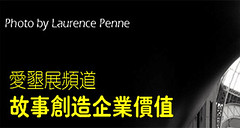
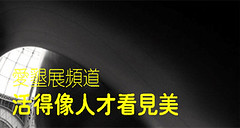
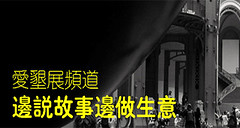
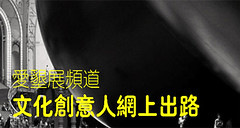
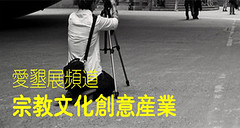
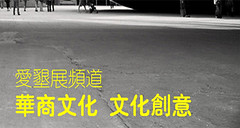
You need to be a member of Iconada.tv 愛墾 網 to add comments!
Join Iconada.tv 愛墾 網